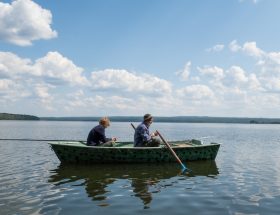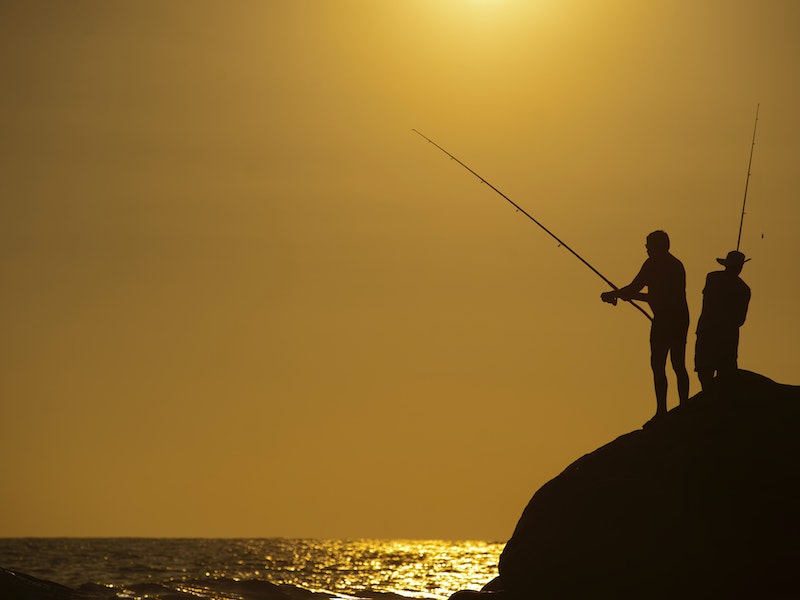This article delves into the fascinating world of sports fishing, exploring the intricacies of the activity, from the equipment used to the techniques employed. Through expert insights and practical tips, readers will gain a deeper understanding of the art and science of sports fishing and how to enjoy this thrilling pastime to the fullest.
 Sports fishing is a popular pastime around the world, enjoyed by people of all ages and skill levels. Whether you’re a seasoned angler or a beginner looking to learn more, there’s always something new to discover when it comes to sports fishing.
Sports fishing is a popular pastime around the world, enjoyed by people of all ages and skill levels. Whether you’re a seasoned angler or a beginner looking to learn more, there’s always something new to discover when it comes to sports fishing.
What is Sports Fishing?
Sports fishing, also known as recreational fishing, is the act of fishing for pleasure or competition rather than for commercial purposes. This can include fishing in freshwater or saltwater, using a variety of techniques and equipment to catch a wide range of fish species. While some people fish purely for the enjoyment of being out on the water, others may participate in tournaments or other competitive events.
A Brief History of Sports Fishing
The origins of sports fishing can be traced back thousands of years, with evidence of fishing as a recreational activity found in ancient Egyptian and Chinese cultures. However, it wasn’t until the 16th century that fishing for sport began to emerge as a popular pastime in Europe.
Over the centuries, sports fishing continued to evolve and grow in popularity, with new techniques and equipment being developed to help anglers catch bigger and more challenging fish. Today, sports fishing is a thriving industry that generates billions of dollars each year, with countless enthusiasts around the world pursuing their passion for fishing.
The Equipment
When it comes to sports fishing, having the right equipment can make all the difference. From rods and reels to bait and lures, here are some of the key pieces of equipment you’ll need to get started.
Rods and Reels
The type of rod and reel you choose will depend on the type of fishing you plan to do. For example, if you’re fishing in freshwater, you’ll typically want a lighter-weight rod and reel combination that can handle smaller fish. On the other hand, if you’re fishing in saltwater or targeting larger species, you’ll need a heavier-duty setup that can handle the added weight and strength of bigger fish.
There are many different types of rods and reels available, each with their own strengths and weaknesses. Some of the most common include spinning rods and reels, baitcasting rods and reels, and fly rods and reels. It’s important to choose a setup that’s appropriate for your skill level and the type of fishing you plan to do.
Bait and Lures
The type of bait or lures you use can also have a big impact on your success as an angler. Live bait, such as worms or minnows, can be effective for certain species, while artificial lures, such as crankbaits or jigs, can be more versatile and allow for more customization.
Again, the type of bait or lures you choose will depend on the type of fish you’re targeting and the conditions you’re fishing in. It’s important to experiment with different options and find what works best for you.
Boats and Other Gear
Depending on where you plan to fish, you may need a boat or other specialized gear to help you get the most out of your experience. For example, if you plan to fish in saltwater, you may need a boat equipped with a trolling motor and other features to help you navigate the open ocean.
Other gear that can be useful for sports fishing includes fishing vests, tackle boxes, and other storage solutions to help you keep your equipment organized and easily accessible while you’re on the water.
Proper Maintenance of Equipment
It’s important to properly maintain your sports fishing equipment to ensure it lasts as long as possible and continues to perform at its best. This can include regular cleaning and lubricating your reels, inspecting your rods for any signs of damage, and storing your gear in a cool, dry place to prevent rust and other damage.
By taking good care of your equipment, you can help ensure that you’re always ready to hit the water and enjoy the thrill of the catch.
The Techniques
There are many different techniques and approaches to sports fishing, each with its own advantages and challenges. Here are some of the most common techniques used by anglers around the world.
Casting and Retrieving
Casting and retrieving is a technique used to lure fish to your bait or lure by mimicking the movements of prey in the water. To use this technique, you simply cast your line out and then reel it in at a steady pace, pausing occasionally to create a more natural movement.
This technique can be effective for a wide range of species, from small freshwater fish to larger saltwater game fish.
Trolling
Trolling is a technique used to cover a large area of water in search of fish. To use this technique, you simply attach a bait or lure to your line and drag it behind your boat as you move slowly through the water.
This technique can be especially effective for targeting larger species that are known to inhabit deeper waters, such as tuna or marlin.
Fly Fishing
Fly fishing is a specialized form of fishing that involves using a lightweight fly rod and a specially designed fly to catch fish. This technique requires a lot of skill and patience, as you must be able to cast the fly accurately and then manipulate it in the water to mimic the movements of prey.
Fly fishing can be particularly effective for catching trout and other freshwater species, but can also be used in saltwater environments.
Bottom Fishing
Bottom fishing is a technique used to target fish that inhabit the bottom of a body of water, such as snapper or grouper. To use this technique, you simply drop your bait or lure to the bottom and then wait for a bite.
This technique can be effective in both freshwater and saltwater environments, but requires specialized equipment to help you reach the bottom and detect when a fish has taken the bait.
Reading the Water
One of the most important skills for any angler is the ability to read the water and identify areas where fish are likely to be found. This can include looking for underwater structures, such as rocks or fallen trees, or paying attention to water temperature and other environmental factors that can impact fish behavior.
By honing your ability to read the water, you can increase your chances of success and catch more fish on your outings.
The Science
While sports fishing is often thought of as a purely recreational activity, there is a significant amount of science involved in the pursuit of fish. Here are some of the key scientific principles that can impact your success as an angler.
Fish Behavior and Habitat
To be successful at sports fishing, it’s important to have a basic understanding of fish behavior and the types of habitats they prefer. Different species of fish have unique patterns of movement, feeding, and spawning, and understanding these patterns can help you identify where and when to fish for a particular species.
For example, some species of fish are more active at night, while others are more active during the day. Some fish prefer to inhabit deep water, while others are found in shallow streams and rivers. By studying the behavior and habitat preferences of different fish species, you can increase your chances of success when you hit the water.
Weather and Environmental Factors
The weather and other environmental factors can have a significant impact on fish behavior and feeding patterns. For example, water temperature, barometric pressure, and wind speed can all affect the way fish move and feed. Understanding how these factors impact fish behavior can help you make more informed decisions about when and where to fish.
Additionally, changes in the environment can impact fish populations and habitats. Pollution, climate change, and overfishing are just a few examples of environmental factors that can impact the health of fish populations and make it more difficult to find and catch fish.
The Ethics
As with any form of hunting or fishing, it’s important for sports fishermen to follow ethical guidelines and practices to ensure the long-term health and sustainability of fish populations. Here are some key ethical considerations to keep in mind when sports fishing.
Catch and Release
One of the most important ethical considerations for sports fishermen is the practice of catch and release. This involves catching a fish, removing the hook, and then releasing it back into the water unharmed. Catch and release can help ensure that fish populations remain healthy and sustainable, and can also help promote conservation efforts.
When practicing catch and release, it’s important to handle the fish with care and minimize stress as much as possible. This may involve using specialized equipment, such as de-hooking pliers or rubber nets, to minimize the harm to the fish.
Respect for the Environment
Sports fishermen should also strive to minimize their impact on the environment while fishing. This can include following local regulations and guidelines, minimizing pollution and waste, and avoiding sensitive areas or habitats where fish populations may be threatened.
By respecting the environment and the fish populations that live within it, sports fishermen can help ensure that these resources remain healthy and sustainable for generations to come.
Conclusion
Sports fishing is a thrilling and rewarding activity that can provide hours of enjoyment for anglers of all skill levels. By understanding the equipment, techniques, science, and ethics of sports fishing, you can increase your chances of success and ensure that you’re fishing in a sustainable and responsible way.
Whether you’re a seasoned pro or just starting out, there’s always something new to learn and explore in the world of sports fishing. So grab your gear, hit the water, and see what adventures await!









